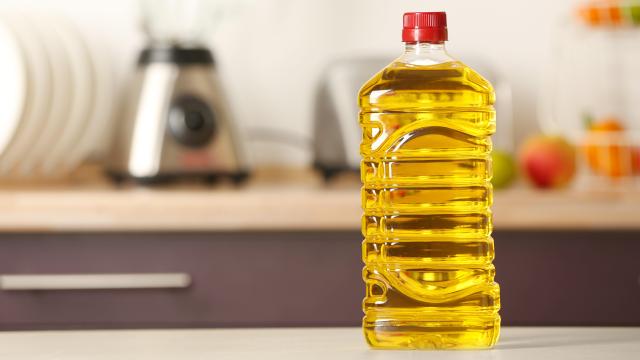Getting price tags off of thrift-store finds, or scraping industrial strength glue off of walls and siding from battery operated smart devices can be a challenge. What’s worse is that most of the solvents that will work on the glue will also damage your paint. Luckily, common cooking oils you likely already have in your kitchen can help you tackle some of the most stubborn adhesives without damaging your walls in the process.
Before you start removing glue, make sure that as much of the material attached to the outer surface of the glue as possible is removed. Exposing the glue to the oil is how the process works, so getting the oil worked in really well is key. Also, make sure to wipe the area down so you’re not rubbing dirt or other debris into the surface — this can cause staining if mixed with the oil.
Which oil should you use to remove adhesive?
Just about any cooking oil will work to loosen up adhesive, including canola, olive, and nut oils, as well as things like peanut butter or mayonnaise. Orange oil, like that found in room deodoriser or Murphy Oil Soap, can work on adhesive as well, although you should be careful not to scrub too much with these as they can eventually work their way into the paint.
Once you’ve picked your oil, the only other things you should need are a rubber or plastic scraper and a clean rag. If you don’t have painting tools on hand, another kitchen tool like a cookbox scraper or pot scraper can come in handy.
How to remove the adhesive
First, apply the oil to the glue and allow it to soak in for about an hour. If it’s hard to get the oil to stay in place, switch to a cooking spray or a nut butter that will cling to the surface. Once the oil has penetrated the surface, it’s time to scrape. If you have a glob of glue, it might even come off in one piece. If it’s a little more spread out, you might need to repeat the process a few times, allowing the oil to soak in little by little as you go. If you end up with shreds or separated blobs of glue, use the rag to loosen them and then give them a few passes with the scraper.
If the glue is still stubborn, you can also use a hair dryer or a heat gun on low to warm the area up. Once it’s warm, the glue might soften and be easier to scrape. Be careful when using this method not to heat up the area too much because that can damage the paint too. You also don’t want to burn yourself, so be aware of that as well.
Once most of the glue has been removed, use a clean rag to blot the oil off of the surface; if there’s still some oil residue, you can use a little bit of dish soap and water to clean it off. You can also try baking soda and a clean rag to get the remaining oil off the surface.

Leave a Reply
You must be logged in to post a comment.